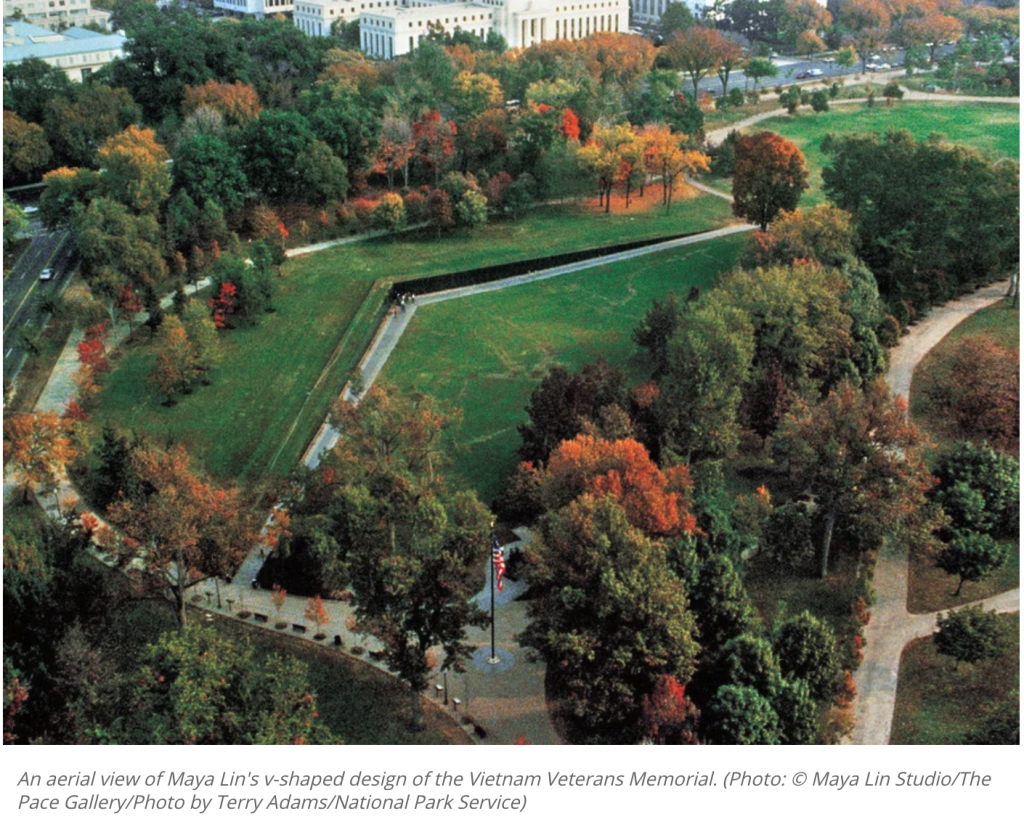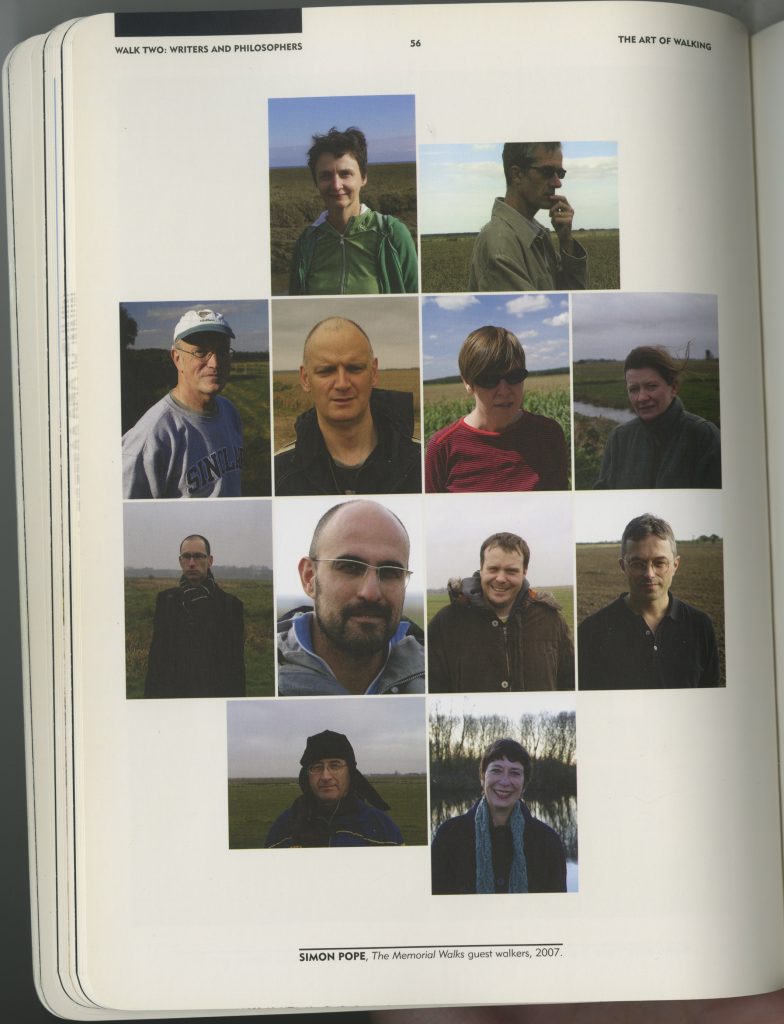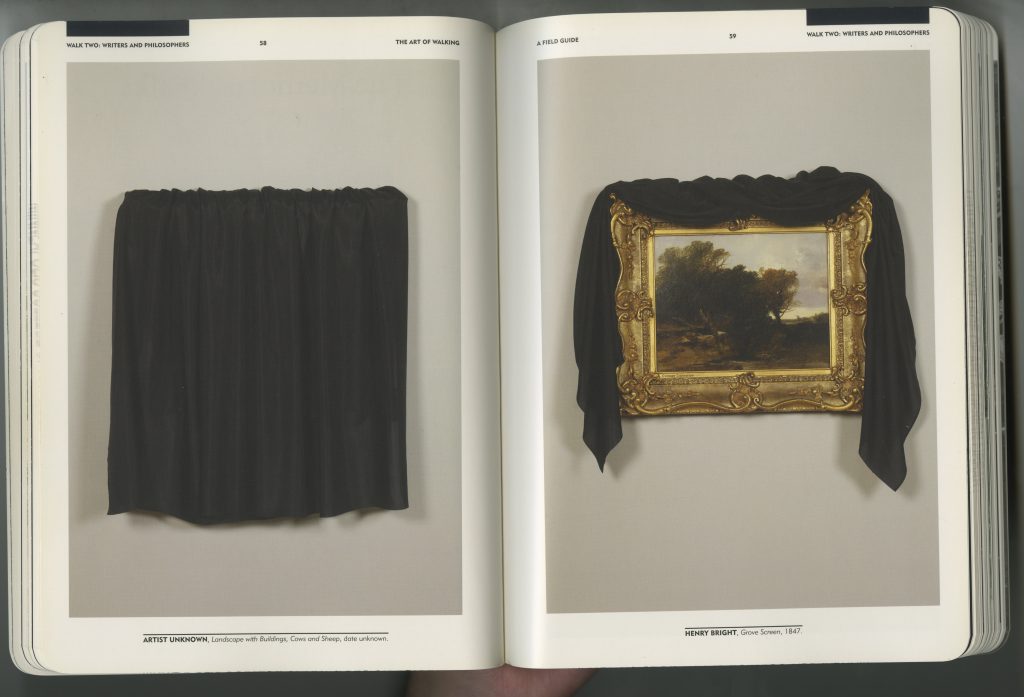
Maya Lin, Vietnam Memorial
“Lin’s design called for the names of nearly 58,000 American servicemen, listed in chronological order of their loss, to be etched in a V-shaped wall of polished black granite sunken into the ground. … When Lin first visited the proposed location for the memorial, she wrote, “I imagined taking a knife and cutting into the earth, opening it up, an initial violence and pain that in time would heal.” Her memorial proved to be a pilgrimage site for those who served in the war and those who had loved ones who fought in Vietnam. It became a sacred place of healing and reverence as she intended.”

